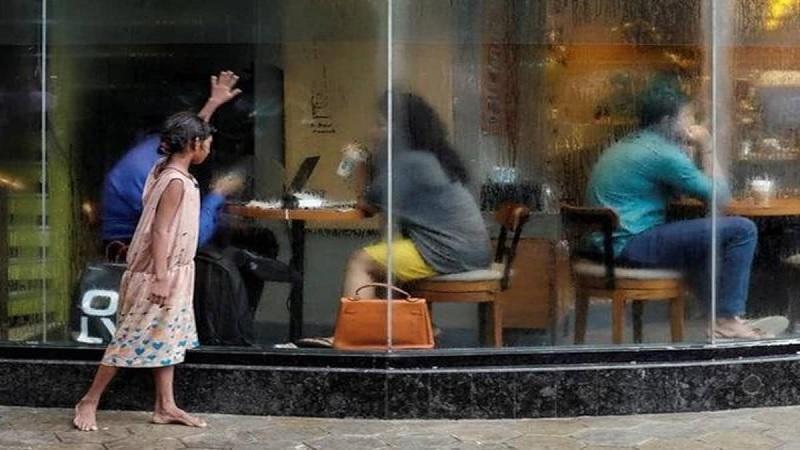World Inequality Report Paints Stark Picture of Lives of “Haves” and “Have-nots” in India

Image courtesy:businesstoday.in
The World Inequality Report 2022, published by the World Inequality Lab that also maintains the World Inequality Database, has ripped off the “development” façade of India and showcased the stark inequality that exists in the country.
“The average national income of the Indian adult population is €PPP7,400 (or INR204,200). While the bottom 50% earns €PPP2 000 (INR53,610), the top 10% earns more than 20 times more (€PPP42 500 or INR1,166,520),” says the report, adding, “While the top 10% and top 1% hold respectively 57% and 22% of total national income, the bottom 50% share has gone down to 13%. India stands out as a poor and very unequal country, with an affluent elite.”
Tracing the history of poverty and income inequality in India, the report says, “Indian income inequality was very high under British colonial rule (1858-1947), with a top 10% income share around 50%. After independence, socialist-inspired five-year plans contributed to reducing this share to 35-40%.” But the report points to the role of liberalisation in worsening inequality saying, “Since the mid-1980s, deregulation and liberalization policies have led to one of the most extreme increases in income and wealth inequality observed in the world. While the top 1% has largely benefited from economic reforms, growth among low and middle income groups has been relatively slow and poverty persists.”
Further busting the myth about the “middle-class”, it showcases the average wealth held by people in different economic classes in India, “Average household wealth in India is equal to €PPP35,000 or INR983,010 (compared with €PPP81,000 in China). The bottom 50% own almost nothing, with an average wealth of €PPP4,200 (6% of the total, INR66,280). The middle class is also relatively poor (with an average wealth of only €PPP26 400 or INR723,930, 29.5% of the total) as compared with the top 10% and 1% who own respectively €PPP231,300 (65% of the total) and over €PPP6.1 million (33%), INR6,354,070, and INR32,449,360.”
Painting a sordid picture of gender inequality in India, the report says, “The female labor income share is equal to 18%. This is significantly lower than the average in Asia (21%, excluding China). This value is one of the lowest in the world, slightly higher than the average share in Middle East (15%).” This is a resounding slap in the face of a regime peddling Shanghai dreams to citizens, and one that especially loves to claim how its track record on gender is at least better than Middle Eastern countries.
Global wealth and income inequality
The report says, “The richest 10% of the global population currently takes 52% of global income, whereas the poorest half of the population earns 8% of it.” It further says, “The poorest half of the global population barely owns any wealth at all, possessing just 2% of the total. In contrast, the richest 10% of the global population own 76% of all wealth.”
On a chilling note, the report says that “inequality is not inevitable, it is a political choice” based on how deregularisation has impacted some countries more than others. It further says, “Over the past 40 years, countries have become significantly richer, but their governments have become significantly poorer. The share of wealth held by public actors is close to zero or negative in rich countries, meaning that the totality of wealth is in private hands.” Explaining how this has been exacerbated by the Covid-19 pandemic, the report says, “This trend has been magnified by the Covid crisis, during which governments borrowed the equivalent of 10-20% of GDP, essentially from the private sector. The currently low wealth of governments has important implications for state capacities to tackle inequality in the future, as well as the key challenges of the 21st century such as climate change.”
Pointing to how, global gender equality is still high, the report says, “Overall, women’s share of total incomes from work (labor income) neared 30% in 1990 and stands at less than 35% today. Current gender earnings inequality remains very high: in a gender equal world, women would earn 50% of all labor income. In 30 years, progress has been very slow at the global level, and dynamics have been different across countries, with some recording progress but others seeing reductions in women’s share of earnings.”
The entire report may be read here.
Get the latest reports & analysis with people's perspective on Protests, movements & deep analytical videos, discussions of the current affairs in your Telegram app. Subscribe to NewsClick's Telegram channel & get Real-Time updates on stories, as they get published on our website.














